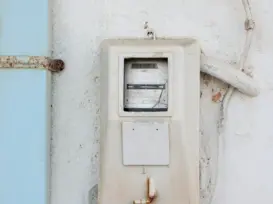Grus Home Energy - Energy-saving tools
Maximizing Efficiency: The Top Energy-Saving Tools for Your Home
Maximizing Efficiency: The Top Energy-Saving Tools for Your Home
In today’s world, energy conservation is more important than ever. With environmental concerns on the rise and energy costs steadily increasing, finding ways to reduce energy consumption is crucial. Luckily, there are a variety of tools and technologies available to help homeowners maximize their energy efficiency and save money on their utility bills. From smart thermostats to energy-efficient appliances, these tools can make a significant impact on your home’s overall energy usage. Here are some of the top energy-saving tools to consider for your home:
1. Smart Thermostats
Smart thermostats are one of the most popular energy-saving tools on the market today. These devices allow you to easily control your home’s heating and cooling systems from anywhere using a smartphone app. By programming your thermostat to adjust the temperature based on your schedule and preferences, you can avoid wasting energy when no one is home. Some smart thermostats even have sensors that can detect when you are in a room and adjust the temperature accordingly. This can lead to significant energy savings over time.
2. Energy-Efficient Appliances
Replacing old, inefficient appliances with energy-efficient models can also help reduce your home’s energy consumption. Energy Star certified appliances are designed to use less energy without sacrificing performance. From refrigerators and dishwashers to washing machines and water heaters, there are Energy Star options available for virtually every appliance in your home. While the initial cost of these appliances may be higher, the long-term energy savings can make them a worthwhile investment.
3. LED Lighting
Switching to LED lighting is a simple and cost-effective way to reduce your home’s energy usage. LED bulbs use up to 75% less energy than traditional incandescent bulbs and can last up to 25 times longer. While LED bulbs may cost more upfront, the savings on your energy bill and the longevity of the bulbs make them a smart choice in the long run. Additionally, LED bulbs are available in a variety of styles and colors, making it easy to find options that suit your home’s aesthetic.
4. Solar Panels
For homeowners looking to make a more significant investment in energy savings, installing solar panels can be a game-changer. Solar panels harness the sun’s energy to generate electricity for your home, reducing your reliance on the grid and lowering your utility bills. While the upfront costs of solar panel installation can be high, many homeowners qualify for tax incentives and rebates that can help offset the expense. In the long run, solar panels can pay for themselves through energy savings and potentially even generate income through net metering programs.
5. Energy Monitoring Systems
Energy monitoring systems provide real-time data on your home’s energy usage, allowing you to identify areas where you can make improvements. These systems can track energy consumption by individual appliances, rooms, or even down to the minute. By monitoring your energy usage, you can identify energy-wasting habits and make changes to reduce your overall consumption. Some energy monitoring systems even offer tips and suggestions for increasing energy efficiency based on your usage patterns.
©2025 All Rights Reserved. Grus IoT Co.,Ltd.
